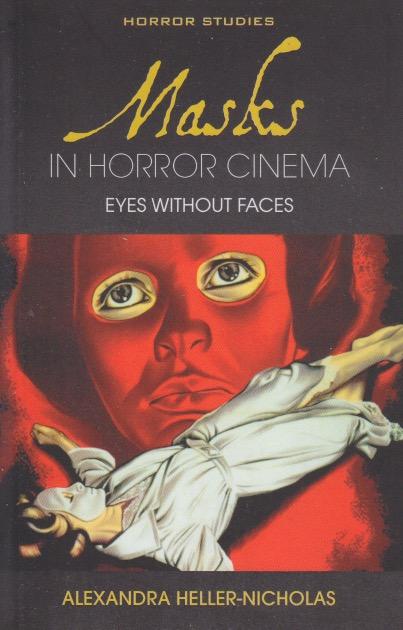
Who are we? Do we really show ourselves to others, or do we wear masks? That question applies to horror films as well as to everyday life. Alexandra Heller-Nicholas addresses this directly in the former context in Masks in Horror Cinema: Eyes without Faces. As I write about horror films, peer reviewers suggest these more technical studies as means of adding depth to my analysis. Most of them are revised dissertations and retain the academic language that makes such documents difficult to read in places. Still, they contain a lot of insight. I learned a lot from Heller-Nicholas and I was particularly impressed that she took the “shamanic imagination” as her approach to the films she analyzes. The ritual aspect makes good use of religion and horror connections. It’s nice to see this catching on.
Masks are more than disguises. Yes, there’s something theatrical to them and there’s a great deal of ritual to theater. Ritual and religion aren’t identical, but they are clearly related. Often masks are discussed as simply a way of hiding a killer’s face. There’s quite a lot more to it. This is where the academic analysis comes in. We can’t explore it in detail in the brief context of this post, but there’s a whole book out there to read on it. Heller-Nicholas doesn’t feel constrained to major movie releases. I did that in Holy Horror because I supposed more people would be interested in reading about movies they’d actually seen (most of them anyway). There are a lot more examples out there. I’m learning about more all the time.
There are many different masks in horror. This book looks at several, some metaphorical, but most literal, and what they convey. Or conceal. The fact is we mask ourselves for many reasons. It’s kind of like when we dream—our subconscious seems to know more about who we are than our waking minds do, and we really don’t share our dreams with others. The mask in horror isn’t worn just by killers. When it is, however, it often has a shamanic effect, or, as Heller-Nicholas points out, a trickster aspect. This is very much like how anthropologists approach shamans in traditional societies. Religious specialists are often tricksters and they provide an important element in cultures that are otherwise beset by rules. Rationality is important, but so is letting go of it once in a while. Shamans get away with things the average person can’t. And it is just one of many masks we wear all the time.
